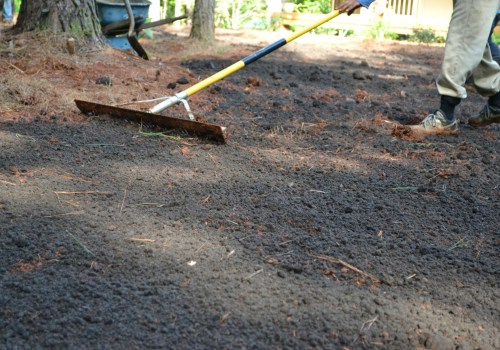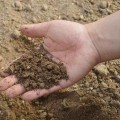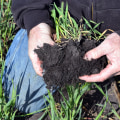Soil testing is an important step in determining the health of your garden or farm. A soil test can help you understand what nutrients are present, what levels are suitable for optimal plant growth, and what pH level your soil should be. Understanding soil test results can help you make informed decisions on how to maintain and improve your soil. The pH test result is one of the most important soil tests to interpret, as it helps to determine the acidity or alkalinity of the soil.
An incorrect pH balance can cause a range of problems from nutrient deficiencies to poor crop yields. In this article, we will look at what pH test results mean, and provide guidance on how to interpret them. Soil testing is an important part of understanding the overall health and fertility of your soil. By understanding the pH levels of your soil, you can make sure that your plants receive the nutrients they need to thrive. A soil's pH level is a measure of its acidity, and it has a significant impact on how well plants can absorb the nutrients they need to survive.
Doing a soil test is the best way to determine the acidity and nutrient content of your soil. There are several types of soil tests available, including basic kits and more detailed tests conducted by professional labs. Basic soil tests will typically provide information about the pH level of the soil, along with other indicators of fertility such as potassium, nitrogen, and phosphorus. When interpreting the results of your soil test, it's important to consider both the pH level and the nutrient content.
The ideal pH level for most plants is between 6.0 and 7.0, so if your soil is too acidic or too alkaline, you may need to adjust the pH level using amendments like lime or sulfur. Additionally, if your soil is low in any of the essential nutrients mentioned above, you may need to add fertilizer or other amendments to boost fertility levels. It's also important to take measures to keep your soil healthy over time. Adding compost or mulch can help keep moisture in and protect plants from extreme temperatures.
Additionally, regular watering will help ensure that your plants have enough water to absorb nutrients from the soil. In conclusion, understanding soil test results and the pH level of your soil is critical for ensuring that your plants have access to the nutrients they need to thrive. By interpreting your soil test results and taking appropriate measures to adjust the pH level or add amendments, you can give your plants the best chance of success. Additionally, regular care such as adding compost or mulch and providing adequate water can help keep your soil healthy over time.
Interpreting Your Soil Test Results
Soil tests provide vital information about the health of your soil.By understanding the results of a soil test, you can make sure that your plants receive the nutrients they need to thrive. When interpreting soil test results, it is important to understand the significance of each measurement. The most important measurement is the soil's pH level, which determines how acidic or alkaline the soil is. A pH level of 7 is neutral, while levels below 7 are acidic and levels above 7 are alkaline.
The ideal range for most plants is between 6 and 7.5, although some plants may have different preferences. If your soil has a low pH level, it may indicate that the soil is too acidic. This can prevent plants from taking up essential nutrients, as some nutrients are more available at higher pH levels. You can adjust the pH of your soil by adding lime, sulfur, or other amendments to make it more alkaline or acidic, depending on the needs of your plants.
Aside from pH, other elements in your soil can also affect plant growth. For instance, a soil test may measure the levels of nitrogen, phosphorus, and potassium in the soil. If these elements are found to be low, you may need to add fertilizer to help your plants grow. It is also important to consider other factors such as texture, drainage, and organic matter when interpreting soil test results.
For example, if the texture of your soil is too sandy or clay-like, it may not be able to retain enough moisture or nutrients for optimal plant growth. The addition of organic matter such as compost can help improve these conditions. By understanding the results of a soil test and making the necessary adjustments to your soil, you can ensure that your plants have the best chance for success. By understanding and interpreting soil test results, you can ensure that your plants get the nutrients they need to thrive.
Soil testing is a critical part of understanding the overall health and fertility of your soil. Knowing the pH levels of your soil is an important part of this process. Key takeaways from this article include regularly testing your soil and taking action based on the results, as well as tips for keeping your soil healthy over time such as adding compost or mulch. It is essential to understand the pH levels of your soil in order to make sure that your plants receive the right nutrients. With regular soil testing and a better understanding of how to interpret the results, you can keep your soil healthy and ensure that your plants are getting the nutrients they need to thrive.











Leave a Comment